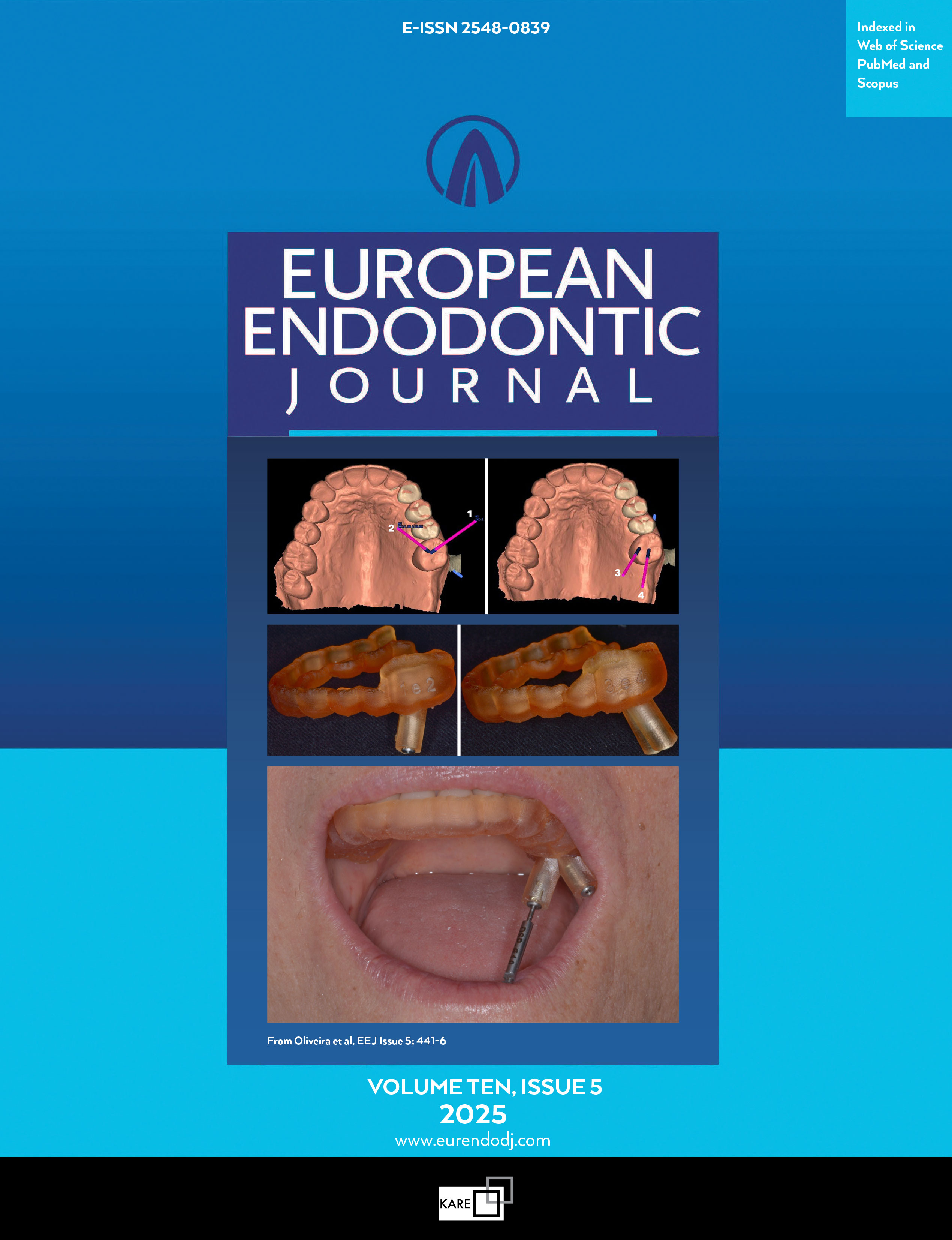Metrics
2024 IMPACT FACTOR
5 year Impact Factor
Eigenfactor Score
2024 CiteScore
Journal Citation Reports
(Clarivate 2025, JIF Rank)
A Literature Review of Minimally Invasive Endodontic Access Cavities - Past, Present and Future
Maggie Yuk Ching Chan, Venetia Cheung, Angeline Hui Cheng Lee, Chengfei ZhangDepartment of Restorative Dental Sciences, The University of Hong Kong, Faculty of Dentistry, Hong Kong, ChinaMinimally invasive endodontic access cavities have gained popularity in academic discussions for their clinical applications in recent years. Although some studies showed an improved fracture resistance of endodontically-treated teeth accessed with a minimally invasive access cavity design, the resulting effectiveness and efficiency of subsequent root canal treatment procedures may be impaired. Aspects that may be impaired are canal detection and negotiation, chemomechanical debridement of the root canal system, quality of the obturation. These are potentially complicated by the increased incidence of procedural mishaps and compromised aesthetic outcomes. In addition, the inherent flaws presented in the methodology of some in vitro studies and the lack of a universal classification system are also of concern. This literature review aims to present a comprehensive overview of the development of the minimally invasive endodontic access cavity and summarise the currently available from a clinical context. (EEJ-2021-05-091)
Keywords: Access cavity, fracture resistance, minimally invasive, root canal treatment, tooth preservationManuscript Language: English
(1820 downloaded)


